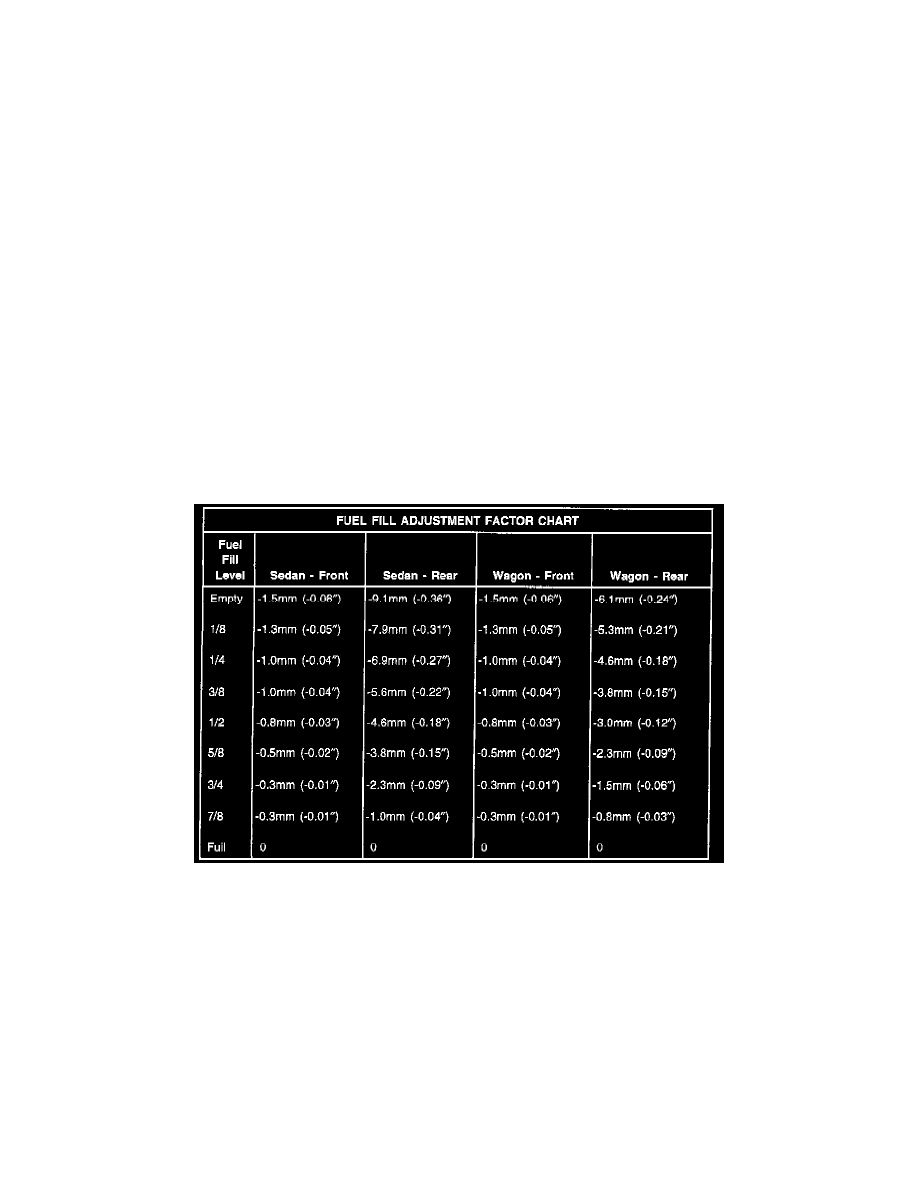Sable V6-232 3.8L (1988)

Tires: All Technical Service Bulletins
Suspension - Shudder On Acceleration From Standstill
Article No.
96-19-3
09/09/96
^
SUSPENSION - FRONT OR REAR - RIDE HEIGHT MEASUREMENT PROCEDURE AND ADJUSTMENT SERVICE TIPS
^
SHUDDER DURING ACCELERATION FROM A STANDSTILL - HIGH FRONT SUSPENSION RIDE HEIGHTS
FORD:
1986-97 TAURUS
LINCOLN-MERCURY:
1986-97 SABLE
This TSB is being republished in its entirety to include 1993 through 1997 model year vehicles.
ISSUE:
Shudder during acceleration from a standstill may be caused by high front suspension ride heights. The vehicle's appearance (attitude) may be high or
low in the front or rear. A procedure has been developed for determining vehicle ride heights, along with specifications for fender opening-to-wheel
center measurements.
ACTION:
If service is required, use the following procedure to determine the vehicle's ride height and, if necessary, make appropriate spring replacements.
1.
Park the vehicle on a level surface with a full tank of gas. If less than a full tank is available, use the adjustment factors shown in the Fuel Fill
Adjustment Factor Chart.
2.
Set tires to decal pressure.
3.
Neutralize the vehicle's suspension system.
a.
Push on the roof rail above the driver's door laterally so as to cause the vehicle to roll.
b.
Use approximately five (5) or six (6) pushes to provide sufficient roll to settle the vehicle out in a neutralized state.
4.
Set tires to decal pressure.
